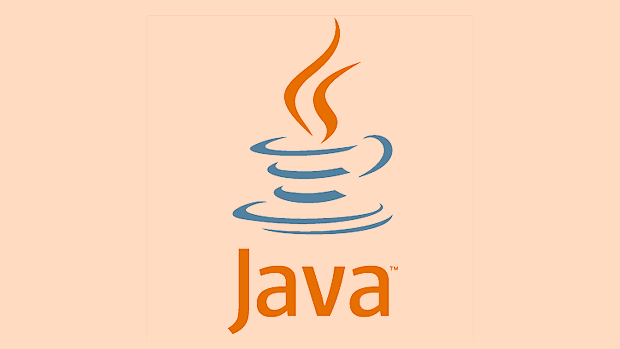Java Memory Model (JMM) ensures visibility and ordering of memory operations across threads. 1. JMM defines how threads interact through memory, focusing on visibility and predictable ordering rather than physical layout. 2. It guarantees that changes made by one thread are visible to others using constructs like volatile, synchronized, and explicit locks. 3. The happens-before relationship establishes formal ordering, ensuring visibility between actions such as monitor unlock/lock, volatile reads/writes, thread start/join. 4. JMM provides atomicity for certain operations and prevents reordering around synchronization boundaries. 5. Understanding JMM helps avoid race conditions, visibility issues, and instruction reordering by using proper synchronization and concurrency utilities.

Java Memory Model (JMM) is a specification that defines how threads in Java interact through memory. It's not about physical memory layout, but rather about visibility and ordering of memory operations across threads.

At its core, JMM helps ensure that changes made by one thread are visible to others, and that operations happen in a predictable order. This is especially important when dealing with shared variables and concurrent access.
Visibility and Shared Variables
In a multi-threaded Java application, each thread can have its own copy of a variable stored in local memory (like CPU cache). This means that if one thread updates a variable, the change might not be immediately visible to other threads.

The JMM ensures visibility through mechanisms like volatile, synchronized, and explicit locks (ReentrantLock). For example:
- When a variable is declared as
volatile, any write to that variable will immediately flush the value back to main memory, and any read will fetch it directly from main memory. - Using
synchronizedblocks or methods ensures that only one thread can execute the block at a time, and also guarantees that the thread sees the most up-to-date values of variables.
Without these constructs, you could end up with stale data or inconsistent states — which is why understanding visibility is crucial for writing correct concurrent code.

Happens-Before Relationship
One of the key concepts in JMM is the happens-before relationship. It’s a formal way to describe the ordering of actions in a multithreaded program.
If action A happens-before action B, then everything done in A (and all previous actions) is visible to B. Here are some common ways this relationship is established:
- Unlocking a monitor happens-before every subsequent lock of the same monitor.
- Writing to a volatile field happens-before every subsequent read of that field.
- The completion of a thread's
run()method happens-before any code that observes the thread to be dead (e.g., viajoin()). - A call to
Thread.start()happens-before any actions in the started thread.
This model allows the JVM to optimize code execution while ensuring correctness when synchronization primitives are used properly.
Atomicity and Ordering Guarantees
Some operations in Java are atomic by default, such as reading or writing a reference or a 32-bit primitive (like int or float). However, operations like long or double may not be atomic on 32-bit architectures unless marked volatile.
The JMM also provides ordering guarantees, meaning that the compiler and processor are not allowed to reorder certain operations around synchronization boundaries. For example:
- Instructions inside a
synchronizedblock won’t be moved outside of it. - Volatile reads and writes act as memory barriers that prevent reordering.
These rules help maintain consistency without forcing developers to think too much about hardware-level details.
Practical Implications and Common Pitfalls
Understanding JMM helps avoid subtle bugs in concurrent programs. Some common issues include:
- Race conditions: Occur when two threads try to update a shared variable without proper synchronization.
- Visibility problems: One thread modifies a variable, but others don’t see the update.
- Instruction reordering: Code may execute in a different order than written due to compiler optimizations or CPU behavior.
To avoid these pitfalls:
- Use
volatilefor state flags that control thread behavior. - Prefer higher-level concurrency utilities like
java.util.concurrent.atomicorExecutorService. - Always use synchronization when multiple threads modify shared mutable state.
So that’s the gist of JMM — it’s not just about memory layout, but more about how Java ensures consistent and predictable behavior in concurrent environments. It might seem abstract at first, but once you get the hang of happens-before and visibility rules, it becomes easier to reason about threaded code.
The above is the detailed content of What is the Java Memory Model (JMM) in detail?. For more information, please follow other related articles on the PHP Chinese website!

Hot AI Tools

Undress AI Tool
Undress images for free

Undresser.AI Undress
AI-powered app for creating realistic nude photos

AI Clothes Remover
Online AI tool for removing clothes from photos.

Clothoff.io
AI clothes remover

Video Face Swap
Swap faces in any video effortlessly with our completely free AI face swap tool!

Hot Article

Hot Tools

Notepad++7.3.1
Easy-to-use and free code editor

SublimeText3 Chinese version
Chinese version, very easy to use

Zend Studio 13.0.1
Powerful PHP integrated development environment

Dreamweaver CS6
Visual web development tools

SublimeText3 Mac version
God-level code editing software (SublimeText3)

Hot Topics
 Difference between HashMap and Hashtable?
Jun 24, 2025 pm 09:41 PM
Difference between HashMap and Hashtable?
Jun 24, 2025 pm 09:41 PM
The difference between HashMap and Hashtable is mainly reflected in thread safety, null value support and performance. 1. In terms of thread safety, Hashtable is thread-safe, and its methods are mostly synchronous methods, while HashMap does not perform synchronization processing, which is not thread-safe; 2. In terms of null value support, HashMap allows one null key and multiple null values, while Hashtable does not allow null keys or values, otherwise a NullPointerException will be thrown; 3. In terms of performance, HashMap is more efficient because there is no synchronization mechanism, and Hashtable has a low locking performance for each operation. It is recommended to use ConcurrentHashMap instead.
 Why do we need wrapper classes?
Jun 28, 2025 am 01:01 AM
Why do we need wrapper classes?
Jun 28, 2025 am 01:01 AM
Java uses wrapper classes because basic data types cannot directly participate in object-oriented operations, and object forms are often required in actual needs; 1. Collection classes can only store objects, such as Lists use automatic boxing to store numerical values; 2. Generics do not support basic types, and packaging classes must be used as type parameters; 3. Packaging classes can represent null values ??to distinguish unset or missing data; 4. Packaging classes provide practical methods such as string conversion to facilitate data parsing and processing, so in scenarios where these characteristics are needed, packaging classes are indispensable.
 What are static methods in interfaces?
Jun 24, 2025 pm 10:57 PM
What are static methods in interfaces?
Jun 24, 2025 pm 10:57 PM
StaticmethodsininterfaceswereintroducedinJava8toallowutilityfunctionswithintheinterfaceitself.BeforeJava8,suchfunctionsrequiredseparatehelperclasses,leadingtodisorganizedcode.Now,staticmethodsprovidethreekeybenefits:1)theyenableutilitymethodsdirectly
 How does JIT compiler optimize code?
Jun 24, 2025 pm 10:45 PM
How does JIT compiler optimize code?
Jun 24, 2025 pm 10:45 PM
The JIT compiler optimizes code through four methods: method inline, hot spot detection and compilation, type speculation and devirtualization, and redundant operation elimination. 1. Method inline reduces call overhead and inserts frequently called small methods directly into the call; 2. Hot spot detection and high-frequency code execution and centrally optimize it to save resources; 3. Type speculation collects runtime type information to achieve devirtualization calls, improving efficiency; 4. Redundant operations eliminate useless calculations and inspections based on operational data deletion, enhancing performance.
 What is an instance initializer block?
Jun 25, 2025 pm 12:21 PM
What is an instance initializer block?
Jun 25, 2025 pm 12:21 PM
Instance initialization blocks are used in Java to run initialization logic when creating objects, which are executed before the constructor. It is suitable for scenarios where multiple constructors share initialization code, complex field initialization, or anonymous class initialization scenarios. Unlike static initialization blocks, it is executed every time it is instantiated, while static initialization blocks only run once when the class is loaded.
 What is the `final` keyword for variables?
Jun 24, 2025 pm 07:29 PM
What is the `final` keyword for variables?
Jun 24, 2025 pm 07:29 PM
InJava,thefinalkeywordpreventsavariable’svaluefrombeingchangedafterassignment,butitsbehaviordiffersforprimitivesandobjectreferences.Forprimitivevariables,finalmakesthevalueconstant,asinfinalintMAX_SPEED=100;wherereassignmentcausesanerror.Forobjectref
 What is the Factory pattern?
Jun 24, 2025 pm 11:29 PM
What is the Factory pattern?
Jun 24, 2025 pm 11:29 PM
Factory mode is used to encapsulate object creation logic, making the code more flexible, easy to maintain, and loosely coupled. The core answer is: by centrally managing object creation logic, hiding implementation details, and supporting the creation of multiple related objects. The specific description is as follows: the factory mode handes object creation to a special factory class or method for processing, avoiding the use of newClass() directly; it is suitable for scenarios where multiple types of related objects are created, creation logic may change, and implementation details need to be hidden; for example, in the payment processor, Stripe, PayPal and other instances are created through factories; its implementation includes the object returned by the factory class based on input parameters, and all objects realize a common interface; common variants include simple factories, factory methods and abstract factories, which are suitable for different complexities.
 What is type casting?
Jun 24, 2025 pm 11:09 PM
What is type casting?
Jun 24, 2025 pm 11:09 PM
There are two types of conversion: implicit and explicit. 1. Implicit conversion occurs automatically, such as converting int to double; 2. Explicit conversion requires manual operation, such as using (int)myDouble. A case where type conversion is required includes processing user input, mathematical operations, or passing different types of values ??between functions. Issues that need to be noted are: turning floating-point numbers into integers will truncate the fractional part, turning large types into small types may lead to data loss, and some languages ??do not allow direct conversion of specific types. A proper understanding of language conversion rules helps avoid errors.






